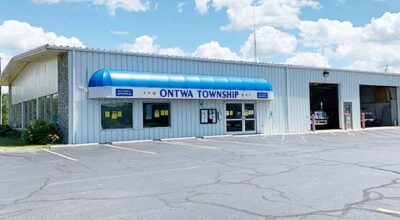Buchanan building receives historic status
Published 9:38 am Tuesday, July 14, 2009
By JESSICA SIEFF
Niles Daily Star
One of Buchanan’s oldest buildings has found new life.
Pamela O’Connor, Hon. AIA, Principal of Preservation Practices out of Kalamazoo announced Monday the National Register of Historic Places made the long awaited decision to add the city’s Zinc Collar Pad building officially to the national register.
The announcement, O’Connor said, solidifies the significance of the building in history.
“Everyone knew it was important but not everyone knew why,” she said.
It was last fall, O’Connor said in a statement that the owners of the property Beth Barnett and Allen Gara put into motion efforts to have the building added to the register.
The official decision came July 1, listing the Zinc Collar Pad building, located at the corner of Oak and Chicago in Buchanan on the register with one of the highest levels of designation available in the nation.
The building’s history is extensive. According to O’Connor, the building was “constructed in 1875 as a manufacturing facility for zinc collar pads, then used on draft and agricultural working animals to heal sores underneath their yolks.”
The business moved out of the Oak and Chicago facility after experiencing exponential growth in the early 1900s.
In 1914, according to O’Connor’s research, the building was taken over by new owners who recognized a “population boom” that came along with increasing industry and eventually Clark Equipment. They renovated the 3,200 square foot building “into four snug apartments, making the building a very early ‘industrial to residential’ adaptive use in Michigan – a much more common practice today than after the turn of the last century.”
In its nomination to the national register, O’Connor said through the process, research must show the historical significance and importance of a structure or piece of property in either a national, state or local capacity.
“It’s not an easy thing,” reaching such a designation, O’Connor said. “It’s one of the highest designations you can get.” The next level would be landmark status.
In the case of the Zinc Collar Pad building, the research was angled at the building’s local historical importance. “It was an early manufacturing facility,” said O’Connor, it employed a good number of townspeople, shipped its product around the world and was one of only a few companies producing such a product in the world.
After its submission, the nomination for the building elevated through the local and state capacities to the national level.
Reaching that designation is advantageous to the new owners because it qualifies the building for certain tax credits. Those credits can help lighten the financial burden in improving or renovating the building. If the owners choose to take advantage of the credits, O’Connor said, they will have to abide by guidelines in their renovations in order to protect and preserve the historical integrity of the structure.
The building was facing condemnation when Barnett and Gara took ownership. Plans are restore the structure, O’Connor said, to “put it back into condition” saving as much of the historical aspects and elements as possible and bring it back to one of its former lives – as a residential apartment building as it was in 1914.
“Empty and ignored for a decade,” O’Connor said, “Barnett and Gara rescued the condemned building, completing their purchase in summer, 2008. Since then, they’ve spent months cleaning the interior, installing a new roof, planning the rest of the rehabilitation…”
Buchanan is also awaiting a decision on its nomination of the downtown area as a historic district.
“There have been national studies done that indicate,” districts and areas, buildings and structures reaching historical designation “are worth more,” O’Connor said. Their values grow, they “maintain a value better within a bad economy,” and appeal to visitors and prospective residents as attractive, authentic and relatable places to live.
Which may now be the hope for the Zinc Collar Pad building, now officially one of the nation’s historical treasures.






